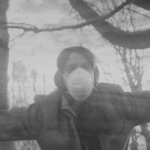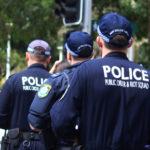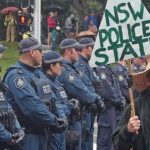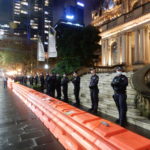COVID-19: The Inadvertent Champion of the Police State

The first wave of COVID-19 brought enhanced powers for the NSW Police Force. And with the provisions of the Public Health Act 2010 (NSW) that came into play, along with their accompanying public health orders, officers responsible for keeping people indoors went a little trigger happy issuing fines.
This authoritarian approach to dealing with the pandemic has been mirrored across the globe: governments have ordered entire populations to lockdown inside their homes for weeks on end, with restrictions on going outside, on permitted visitors, as well as on assembling with others.
Citizens are aware that the pandemic laws have been imposed to prevent the spread of the virus. But concerns have been raised about whether certain restrictions could continue to apply after the threat has died down or if the public may become too compliant in regard to repressive measures.
South of the border
At the moment, the rest of the nation is looking at what’s happening in Melbourne as a significant second wave of COVID-19 has gripped the city. The population of Australia’s second largest urban area is now in a more repressive lockdown than it was in the first place.
Due to the mounting cases at hand, the Andrews government declared a “state of disaster” on 2 August, which involves a series of extreme restrictions, including a nightly curfew and a limit on exercising outside to one hour a day.
And the Victorian police minister now has extraordinary new powers, including authority over all other government agencies. But the most excessive power she’s gained is the ability to override legislation, meaning the minister can suspend the application of any law on the books.
The iron grip
A recent article published in the Conversation outlines that Central Asian authoritarian regimes have been taking advantage of the COVID-19 pandemic by imposing restrictions on movements and enhanced monitoring via phone apps.
It’s true that the Victorian government has never been charged as being in a similar league to the Turkmenistan regime, but it’s hard to see a marked difference when it comes to lockdown measures, as Melburnians are now confined to their homes, with the police and army patrolling the streets.
“Temporary measures introduced during the emergency, such as harsh legislative measures and new surveillance tools, are likely to remain a permanent feature of the new normal,” the authors of the article on pandemic measures in Central Asia wrote.
But while civil libertarians too have warned that pandemic restrictions might stick around after the virus cases ease over here, it hasn’t seemed very likely considering the way these laws have been applied – that’s until a recent development in the premier state.
The ban on protests
In late March, NSW premier Gladys Berejiklian handed NSW police commissioner Mick Fuller control of this state’s COVID response. And the restrictions that currently apply are contained in Public Health (COVID-19 Restrictions on Gathering and Movement) Order (No 4) Amendment Order 2020.
As the title suggests, this is the fourth iteration of the order restricting gatherings and movement. The first order issued on 30 March restricted public gatherings of more than two people. The second released on 14 May, banned public gatherings of over 10 individuals.
Then the third public health order was issued on 29 May. It defined a public gathering as “a meeting or assembly of persons for a common purpose”. And it restricted these assemblies to no more than 10 people. The current order restricts gatherings outside to 20 and under.
But, what became apparent following the 28 July Black Lives Matter rally is that NSW police is interpreting this to mean that people can’t gather for a protest of more than 20, even if they’re not standing together and keeping social distance, as they’re still gathered “for a common purpose”.
This currently enforceable law can result in police officers arresting a person and issuing them with a $1,000 fine. However, on reading the public health order, this isn’t really apparent.
So, it remains to be seen whether lawmakers are drafting any further provisions that could stick around as part of the pandemic legacy, or perhaps there’s already such a rule set out in plain sight on the pages of the public health order, but it’s just not discernible as yet.







